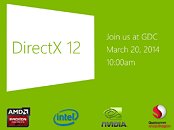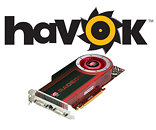
OCZ and AMD to Showcase Solid-State Supercharged Gaming Systems at GDC
OCZ Storage Solutions - a Toshiba Group Company and leading provider of high-performance solid state drives (SSDs) for computing devices and systems, today announced its partnership with AMD to showcase the power of high performance technology at the Game Developer Conference (GDC) March 17-21 at the Moscone Center in San Francisco, CA. AMD's demo systems will feature best-in-class Vector 150 Series solid state drives demonstrating how developers can enhance productivity and efficiency in their work.
"We are excited to partner with AMD for the upcoming Game Developers Conference to support the fast growing interactive game development industry," said Alex Mei, CMO for OCZ Storage Solutions. "OCZ is dedicated to delivering premium solid state storage solutions that are not only a useful tool for developers, but also meet the unique demands of enthusiasts and gamers on all levels."
"We are excited to partner with AMD for the upcoming Game Developers Conference to support the fast growing interactive game development industry," said Alex Mei, CMO for OCZ Storage Solutions. "OCZ is dedicated to delivering premium solid state storage solutions that are not only a useful tool for developers, but also meet the unique demands of enthusiasts and gamers on all levels."









